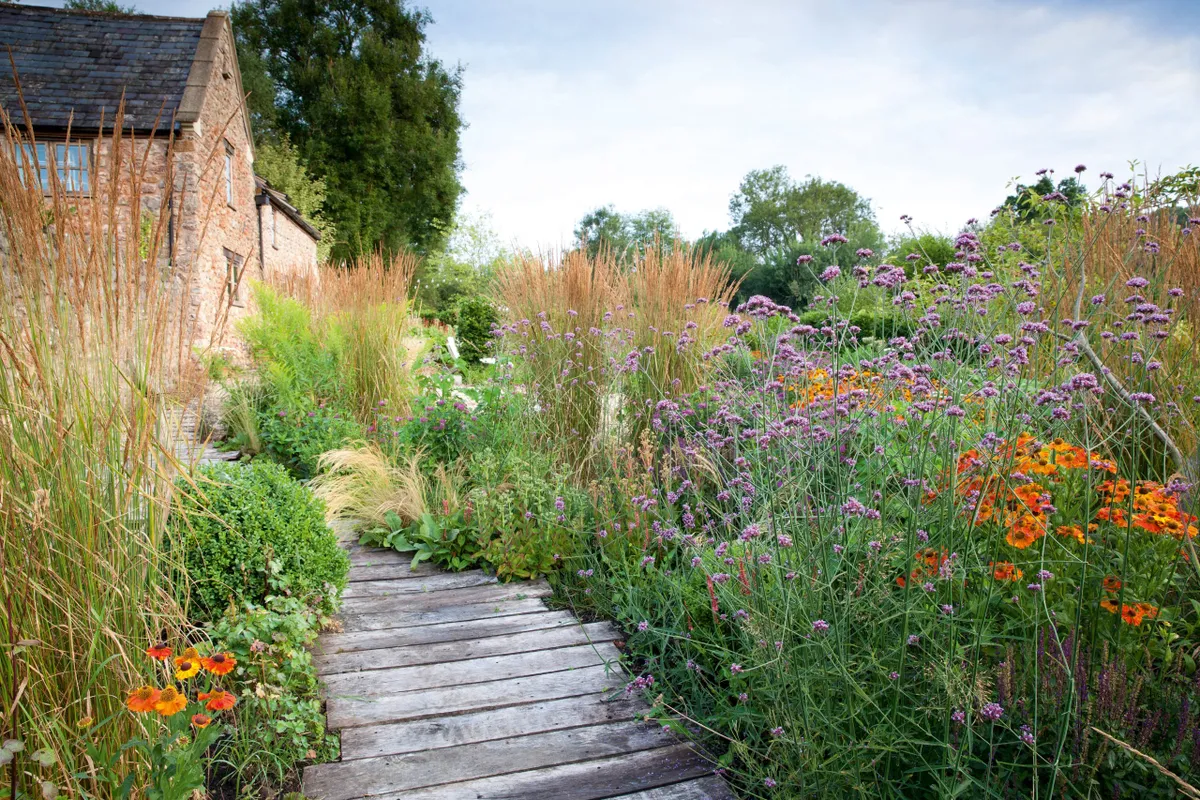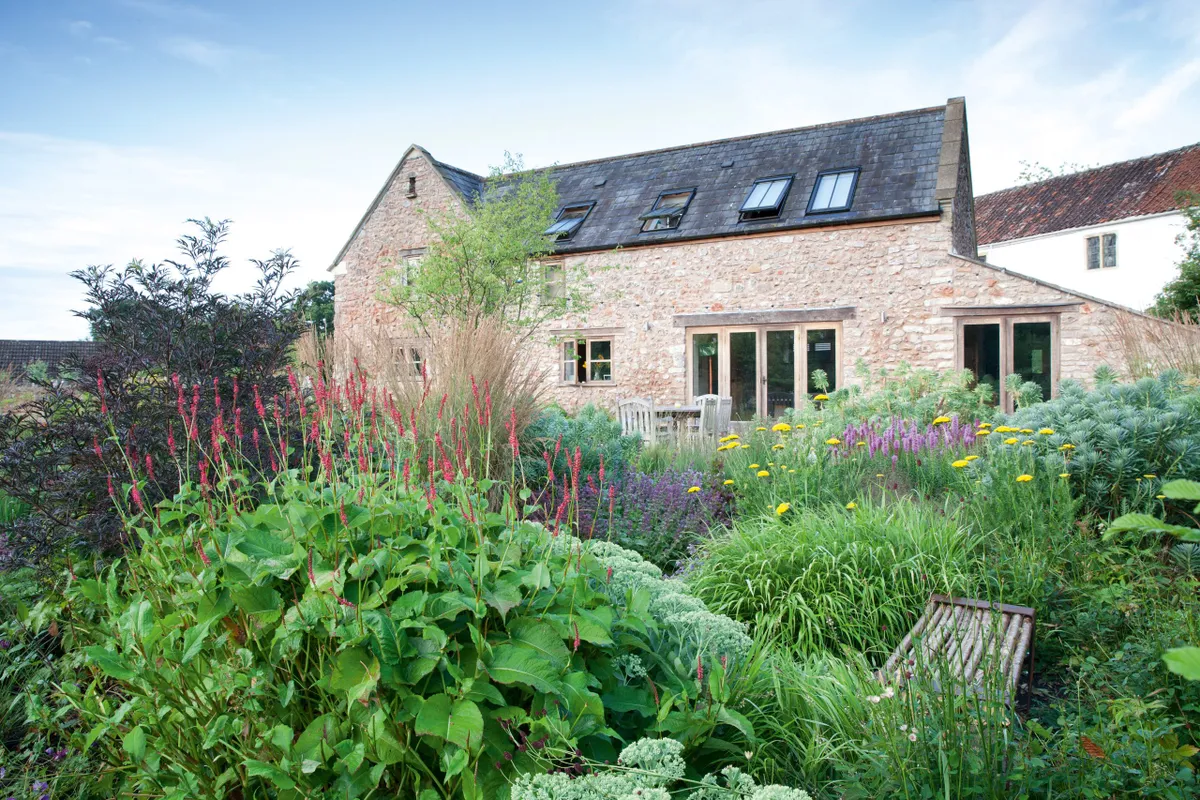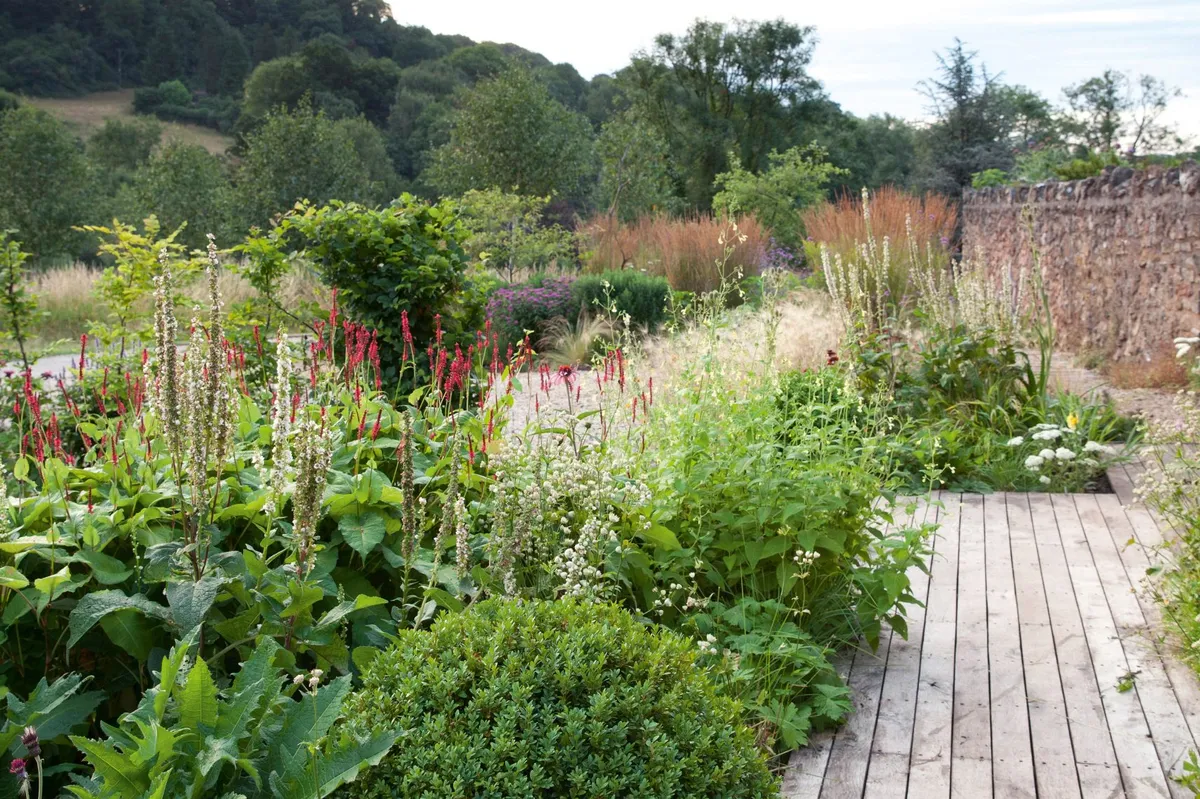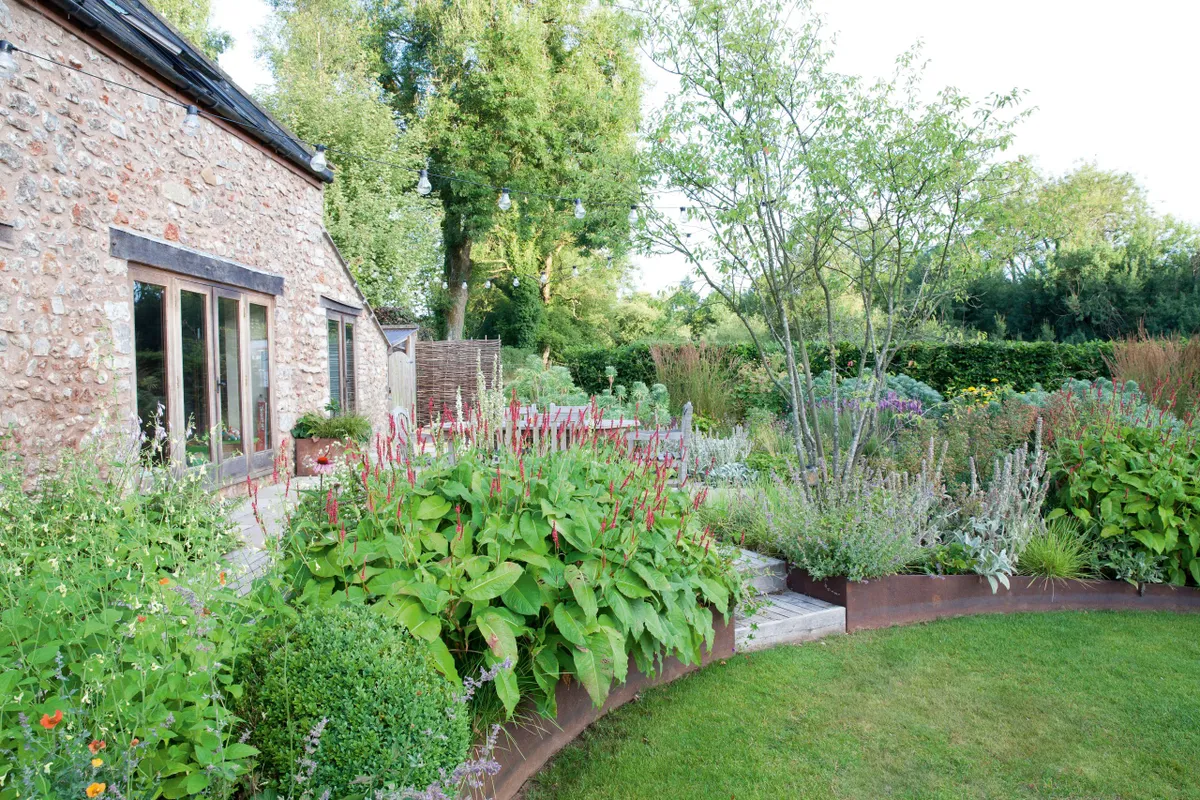College Barn is an eological country garden in Somerset which has a mixture of coal spoil and heavy clay. At a quarter of an acre, the garden has a cool temperate, with warm summers and minimum -7°C in winter. Hardiness zone USDA 8b.
It is hard to believe that the area around Shepton Mallet was once a thriving and no doubt, hectic, noisy and polluted coal-mining district. The lush green of the surrounding wooded hills feels like an embrace for a Somerset village, but until the 1950s this was an active industrial neighbourhood. Indeed Alex Crossman and Jenni Weaver’s house was originally the colliery pump house. The two ecological consultants – whose workload includes carrying out the bat and badger surveys that developers often have to commission before planning permission is granted – came here in 2012, and started making the garden in 2014.
Creating a garden where aesthetic pleasure and biodiversity are balanced is perhaps one of the great challenges of the age. In rural surroundings and with a keen awareness of the wild world around them, Alex and Jenni have got this balance right.

Orange Helenium ‘Indianersommer’ makes a vibrant contrast with Verbena bonariensis, both first-rate pollinator plants. Upright grass Calamagrostis x acutiflora ‘Karl Foerster’ develops a rhythm through the border.

Persicaria amplexicaulis ‘Firedance’ forms a solid clump in the front garden, flourishing in the heavy soil, and flowering for much of the late-summer season. Yellow comes from Achillea ‘Hella Glashoff’, pink from the spikes of Liatris spicata and violet-blue from Nepeta subsessilis.

The ivory spikes of Verbascum chaixii ‘Album’ are dotted through this area of planting. The thistly leaves are those of Cirsium rivulare ‘Atropurpureum’, which have now mostly finished flowering.
A perennial meadow in the making
Beyond the perennial plantings near the house, in a lower part of the garden, is an area of rough grass, including several locally uncommon, wildflower species into which cultivars of Eupatorium, Aster and Geranium have been planted. By late summer the grass is very rank and the perennials find it difficult to compete, but Alex and Jenni are keen to persist in developing a wildflower meadow with added perennials. Ideally, such a meadow would be on poor soil; low phosphorus soils in particular reduce grass growth, allowing for a better balance with perennials. Where this is not possible there is another solution, which Alex and Jenni are planning to try – sowing with yellow rattle (Rhinanthus minor) in the autumn to parasitise and weaken the grasses the following spring, thus shifting the balance towards flowering wild species and perennials. Garden perennials grown in grass can flourish but will always be smaller than when grown in borders where there is less competition. Geraniums are often the most successful, as they make early growth that enables them to compete effectively.

A box ball adds some traditional structure, flanked on the left by the delicate, pale-yellow flowers of Nepeta govaniana, a very different plant from the more familiar Nepeta species, and on the right by Persicaria amplexicaulis ‘Firedance’ and the flower spikes of Stachys byzantina.

The borders in front of the house, looking south, with clumps of Calamagrostis x acutiflora ‘Karl Foerster’ and orange Helenium ‘Orange Summer’. Spring-flowering Euphorbia characias subsp. wulfenii makes an impact with its clumps of grey foliage, and scarlet Knautia macedonica scatters itself through the centre.

Liatris spicata forms a block in a central raised bed, backed by grey Euphorbia characias subsp. wulfenii. Stachys byzantina makes a silver splash along with Origanum laevigatum ‘Herrenhausen’ – one of the best late-summer plants for attracting bees.
USEFUL INFORMATION Address College Barn, Benter, Oakhill, Radstock, Somerset BA3 5BJ. Tel 01761 232605. Website ngs.org.uk. Open Annually under the National Garden Scheme as part of Benter Gardens. In 2020 the garden will open 18 July, 2-6pm and 12 September, 3-7pm.